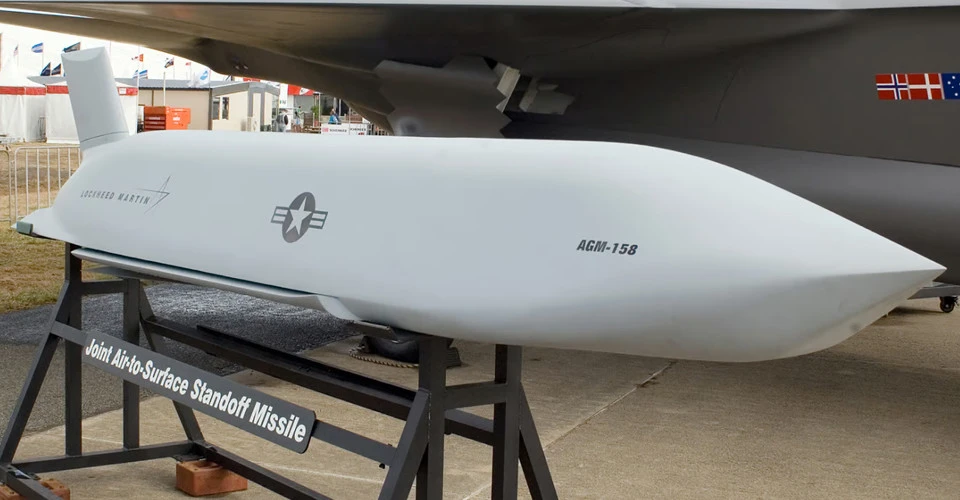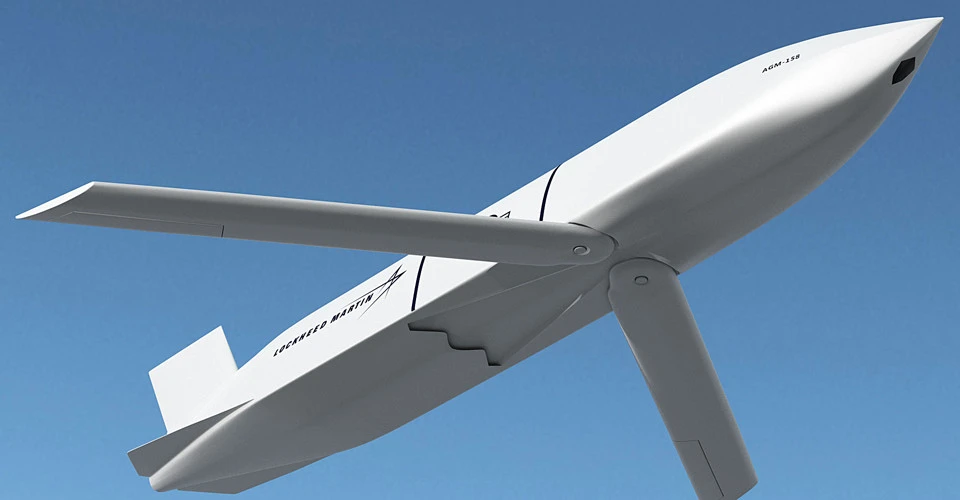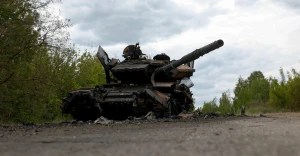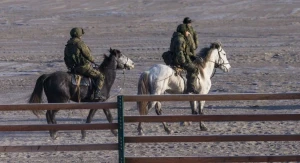
Invisible to radars, avoiding air defenses: Everything about JASSM missiles for F-16s and their capabilities
There are jets – there will be missiles for them. The White House is reportedly considering sending AGM-158 JASSM long-range cruise missiles to Ukraine, according to various Western media outlets
Contents
- What is the AGM-158 JASSM?
- How JASSM missiles work
- Technical specifications
- When will Ukraine receive AGM-158 JASSM missiles and how many?
- How JASSM missiles will change the frontline
- Did the allies allow the use of AGM-158 JASSM missiles to strike Russia?
What is the AGM-158 JASSM?
The AGM-158 JASSM (Joint Air-to-Surface Standoff Missile) is an American high-precision air-to-surface cruise missile. It is designed to strike important, well-protected stationary and moving targets, day or night, in any weather condition.
Older JASSM models, roughly four meters long, are radar-evading with a range of around 370 km. These missiles fly low and are programmed to avoid enemy air defenses. The newer JASSM-ER variant has an extended range of over 800 km, but according to Reuters, Ukraine is likely to receive the older model – as it is more widely available in U.S. stockpiles.

Photo: Wikipedia
“In terms of its capabilities, the missile is similar to the British Storm Shadow. Personally, I find air-launched missiles to be more effective than other missile systems,” said Oleh Katkov, editor-in-chief of Defense Express, during an appearance on Espreso TV, commenting on the possible transfer of the AGM-158 to Ukraine.
The JASSM features a 450 kg penetrating warhead, and each missile costs around $1 million. Lockheed Martin, the manufacturer, has reported the production of over 3,500 units.
How JASSM missiles work
So far, JASSM missiles have only been deployed by American aircraft, including the F-15, B-1B, B-2, B-52H, F-35, and most notably the F-16, which Ukraine's Armed Forces now have in service. The F-16 can carry two JASSM missiles. According to Reuters, the AGM-158 can even be adapted for use with non-Western fighter jets in Ukraine's fleet.
These missiles are designed with "stealth" technology, utilizing specific geometric shapes and radar-absorbing materials to minimize detection by radar, infrared, and other surveillance systems. At low altitudes, the JASSM can penetrate air defense systems with ease.
Equipped with a turbojet engine and an autonomous target recognition system, JASSM missiles rely on GPS signals and inertial navigation for guidance. In the final phase of flight, a thermal imaging seeker takes over, allowing the missile to ignore electronic warfare (EW) interference and hit its target with precision.

Photo: turbosquid
Technical specifications
- Length: 4.27 m
- Wingspan: 2.4 m
- Weight: 1,020 kg
- Warhead: 450 kg
- Range: 370 km
- Speed: Up to 1,000 km/h
- Targeting error: Up to 3 m
- Production cost: $0.7 million
When will Ukraine receive AGM-158 JASSM missiles and how many?
The JASSM missile has long been a top priority for Ukraine’s military leadership. This makes sense, especially after the transfer of F-16 aircraft to the Ukrainian Air Force. These missiles will unlock the full potential of the fighters. Initially, the AGM-158s were off-limits for Ukraine. However, following the delivery of Abrams tanks, Patriot systems, and F-16s, JASSM is next in line.
In August 2024, Politico reported that the Biden administration was "open" to the idea of providing long-range cruise missiles for Ukraine’s F-16s. At that time, a final decision hadn’t been made yet, and officials were still "working on the details."
By the following month, media reports shifted. Reuters, citing U.S. government sources, highlighted that Washington was close to including JASSM in an upcoming aid package. The missiles might be officially announced this fall, but it will take a few months for them to arrive.
According to Defense Express commentators, "If all goes well, we could receive these weapons by the end of the year or early next year, though no official decision has been made yet."
They note that the missile's key strength isn’t just its long-range or other specs. It’s the fact that U.S. stockpiles are full of these missiles, meaning a steady supply could be sent to Ukraine. The U.S. could hand over older JASSMs while replenishing its stock with newer ones.
It's clear the older versions won’t be retired anytime soon. In August 2024, the U.S. Department of Defense allocated $130 million to ramp up JASSM production. This could be for Ukraine’s needs or other buyers—like Poland, which secured a deal for over 800 missiles this year.
How JASSM missiles will change the frontline
To date, the AGM-158 JASSM missiles have been used in combat on two occasions. The first instance was in April 2018, when the U.S., alongside the UK and France, launched a significant missile strike on chemical weapons facilities run by the Bashar al-Assad regime in Syria. Nineteen missiles were deployed from a B-1B Lancer bomber, which can carry up to 24 JASSMs.
The second notable use occurred on October 27, 2019, when the U.S. targeted and killed Abu Bakr al-Baghdadi, leader of ISIS. Multiple missiles were used to obliterate his compound.

"Deploying JASSMs to Ukraine could drastically shift the battlefield dynamics," U.S. officials stated. Military analysts added that the missiles, known for their stealth and extended range, could allow Ukraine to strike Russian bridgeheads and supply depots hundreds of kilometers away, reported Voice of America.
The F-16 isn’t compatible with Storm Shadow or SCALP, but it can launch JASSMs. Pairing the F-16 with these missiles would effectively double Ukraine’s deep strike capabilities, Forbes quoted Brynn Tannehill from the RAND Corporation. Expanding Ukraine's cruise missile arsenal could be a game-changer in retaking Crimea, occupied by Russia for nine years.
Quantity is also a critical factor when looking at these missiles from across the Atlantic.
The main issue for Ukraine isn’t quality but quantity. They need more F-16s, more jets, more weapons, and more ammo. Even if they get advanced weapons, the numbers aren’t enough, said retired U.S. Air Force Colonel Jeffrey H. Fischer.
However, experts caution against seeing JASSMs or any weapon as a "wunderwaffe" that will single-handedly alter the course of the conflict.
Did the allies allow the use of AGM-158 JASSM missiles to strike Russia?
As of August 2024, Politico pointed out that the ban on using American weapons against Russian territory, according to international law, remains in place (this ban does not cover Ukrainian land occupied by the Russian Federation). These same restrictions also apply to long-range Army Tactical Missile Systems (ATACMS), which Ukraine already has in service.
Still, experts suggest that the transfer of JASSM missiles to Ukraine could signal a shift in this policy.
For example, Voice of America quoted retired U.S. Air Force General Charles Corcoran, who called the missile transfer "a hopeful sign." He believes that Washington might allow Ukraine to use the AGM-158s to their full potential.
“I don’t think it makes sense to give them long-range weapons they can’t actually use. If that’s the case, we’d just send short-range ones, which are much cheaper,” the general stated.
Meanwhile, Reuters has already listed possible first targets for these missiles: Russian military facilities in the border regions of Voronezh and Bryansk. As the Russians continue to move their forces further from the front lines, it will only get harder for them to maintain their positions.
- News













































